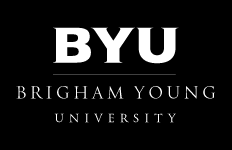AUGUSTE LEPERE
Lepère, (Louis-)Auguste
(b Paris, 30 Nov 1849; d Domme, 20 Nov 1918).
French printmaker and painter. At 13 Lepère began an apprenticeship with Burn Smeeton ( fl 1840-60), an English wood-engraver working in Paris. He began exhibiting paintings at the Paris Salon at the age of 20. In 1875 he showed a painting of the Commune at the Salon des Refusés, Guardpost on the Rue des Rosiers (Paris, Carnavalet), which won praise from Camille Pissarro and Armand Guillaumin. From the early 1880s Lepère's wood-engraving business left him little time for painting. He only returned to it seriously after 1900, when success as a printmaker brought him a degree of financial security.
Lepère worked in many other media, including watercolour, ceramic decoration, etching, lithography and leather bookbinding; but it was as a woodcut artist that he made his greatest contribution. He played a major role in the transformation of the woodcut from a reproductive medium of illustration to an independent means of aesthetic expression. In 1875, when Lepère's first signed reproductive wood-engravings began appearing in illustrated periodicals, his name appeared as draughtsman as well as engraver. In 1877 he began publishing wood-engravings based on his own compositions. He had, however, the more ambitious aim of establishing the woodcut as a medium that would be disseminated in the form of single-sheet prints, like etching and lithography.
In 1889 Lepère broadened the expressive boundaries of the woodcut. He hand-coloured several of his earlier wood-engravings, produced a chiaroscuro woodcut (Basketsellers) and experimented with cutting and printing a colour woodcut from sidegrain pearwood with water-based colours in the manner of the Japanese (e.g. Le Palais de Justice). His example may have encouraged Henri Rivière to produce woodcuts in the Japanese manner from 1889 and inspired experiments with the medium by Henri Guérard (1846-97) and Charles Maurin in 1890. Félix Vallotton, Maurice Denis, Aristide Maillol and Paul Gauguin took up the woodcut in the 1890s and by 1895 a full-scale revival of the medium was well underway.
Lepère's favourite subject was the city of Paris and its inhabitants. His work in the medium of woodcut is characterized by two distinct styles. His wood-engravings for illustrated periodicals and books are notable for their expressive, etching-like style, unmatched for the atmospheric qualities achieved through the manipulation of fine black-and-white lines. His woodcuts of the 1890s, on the other hand, often still done on the endgrain, are much broader in approach. Again, one of their most notable attributes is their atmospheric quality, though achieved through different means; for example, in works such as The Convalescent subtle effects were achieved by inking the line blocks in brown, blue and grey, and by adding flat colour blocks inked with transparent, water-based pigments in imitation of the Japanese.
BIBLIOGRAPHY
R. Marx: 'Peintres-graveurs contemporains: L.-A. Lepère', Gaz. B.-A., n.s. 3, xxxviii (1896), pp. 299-305; xxxix (1908), pp. 78-88, 394-402, 497-512; n.s. 4, iv (1910), pp. 66-70
A. Lotz-Brissonneau: L'Oeuvre gravé de Auguste Lepère: Catalogue descriptif et analytique (Paris, [1905])
C. Saunier: Auguste Lepère, peintre et graveur, décorateur de livres (Paris, 1931) [incl. G. M. Texier-Bernier's continuation of Lotz-Brissonneau's cat. rais.]
J. Baas: Auguste Lepère and the Artistic Revival of the Woodcut in France, 1875-1895 (diss., Ann Arbor, U. MI, 1982)
The Artistic Revival of the Woodcut in France, 1850-1900 (exh. cat. by J. Baas and R. S. Field, Ann Arbor, U. MI, Mus. A.; New Haven, CT, Yale U., A.G.; Baltimore, MD, Mus. A.; 1983-4), pp. 40-49
JACQUELYNN BAAS
© Oxford University Press 2007
How to cite Grove Art Online



